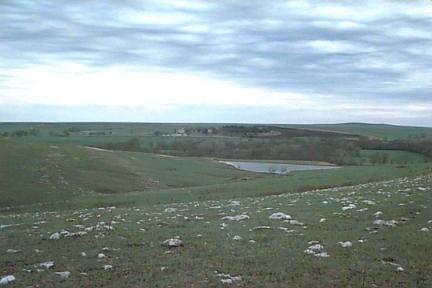


The mature boreal forest pattern in the south shows Two lines of evidence support the thesis that fire has always been an integral factor in the boreal forest: 1 direct, eye-witness accounts and forest-fire statistics, and 2 indirect, circumstantial evidence based on the effects of fire, as well as on persisting indicators. The dominant fire regime in the boreal forest is high-intensity crown fires or severe surface fires of very large size, often more than 10,000 ha 100km 2, and sometimes more than 400,000 ha 4000km 2. The taiga is a unique and vital part of the earth's biosphere, and understanding its climate, including its average rainfall, is crucial for preserving and protecting this fragile ecosystem. However, the taiga's ecosystem is able to thrive due to the long, cold winters, which allow for the accumulation of a deep snowpack that serves as a natural water source. In conclusion, the taiga experiences relatively low levels of rainfall due to its high-latitude location and its position in the rain shadow of mountain ranges. It is also home to a range of animals, including wolves, lynx, moose, and caribou. The taiga is home to a variety of coniferous trees, such as pines, spruces, and firs, as well as deciduous trees, such as birch and aspen. The snowpack acts as a natural reservoir, releasing water slowly throughout the summer months to sustain the ecosystem. In Europe, the taiga extends from Norway to Russia, and the rainfall patterns are similar to those in North America.ĭespite its low rainfall, the taiga is able to support a diverse array of plant and animal life due to the long, cold winters, which allow for a deep snowpack to build up. The coastal regions of the taiga, which are influenced by the Pacific Ocean, tend to receive more rainfall than the inland regions, which are drier and more continental in nature. In North America, the taiga region stretches from Alaska to Newfoundland, and the amount of rainfall can vary significantly within this area. The taiga's average rainfall also varies depending on its location. The amount of snowfall varies widely across the taiga, with some areas receiving as little as 20 inches per year and others receiving over 100 inches. The snowpack accumulates and provides a vital source of water for plants and animals during the long, dry summer. The taiga also lies in the rain shadow of mountain ranges, which means that it receives less rainfall due to the obstruction of moist air by the mountains.ĭespite its low overall rainfall, the taiga does receive some precipitation in the form of snow during the winter months. The cold air is not able to hold as much moisture as warm air, so it tends to produce less precipitation.

This is because it is located in a high-latitude region, where the air is dry and cool. In general, the taiga experiences relatively low levels of rainfall compared to other biomes. One important aspect of the taiga's climate is its average rainfall, which plays a crucial role in shaping the landscape and supporting the ecosystem. It is characterized by its long, cold winters and short, cool summers, and is home to a variety of plants and animals that have adapted to the harsh conditions. The taiga, also known as the boreal forest, is a large biome located just below the tundra in the northern hemisphere.


 0 kommentar(er)
0 kommentar(er)
